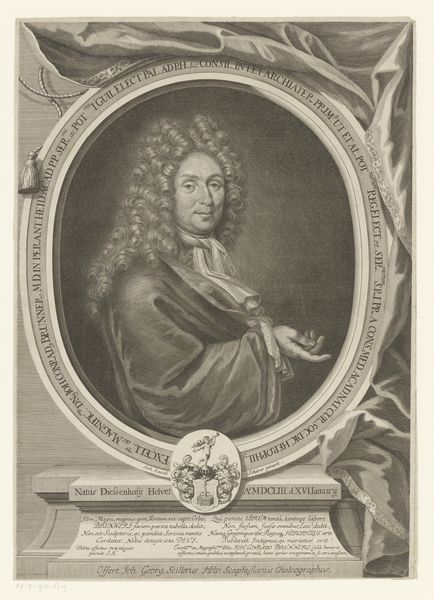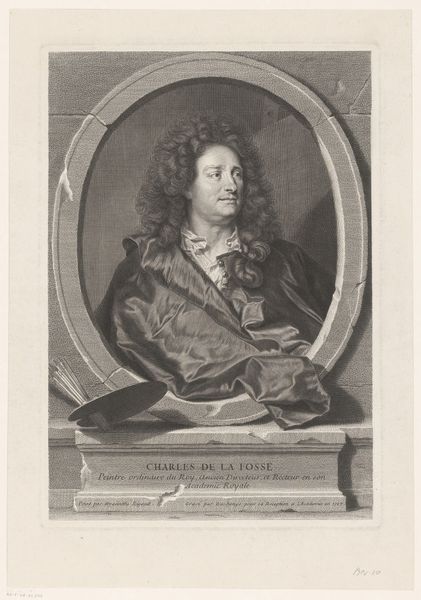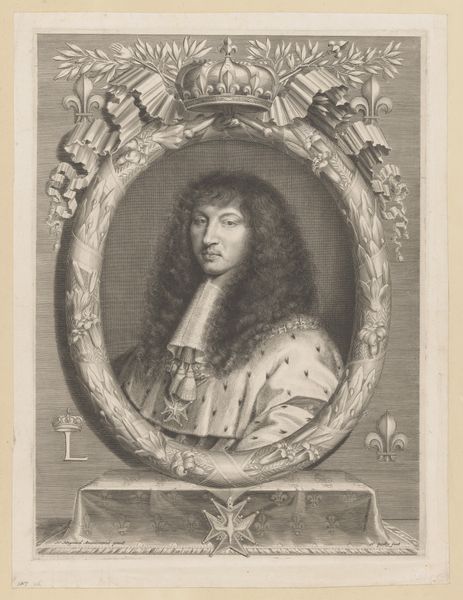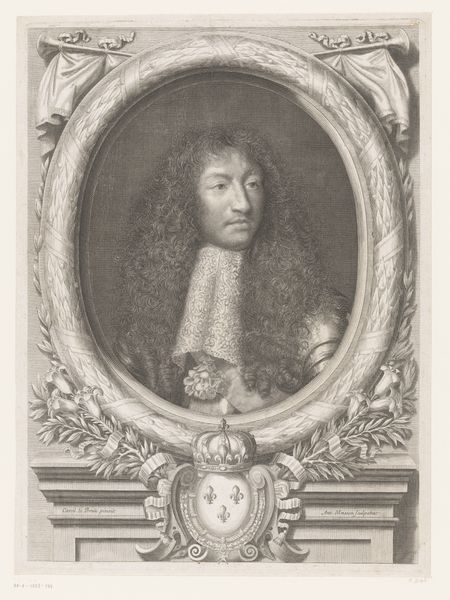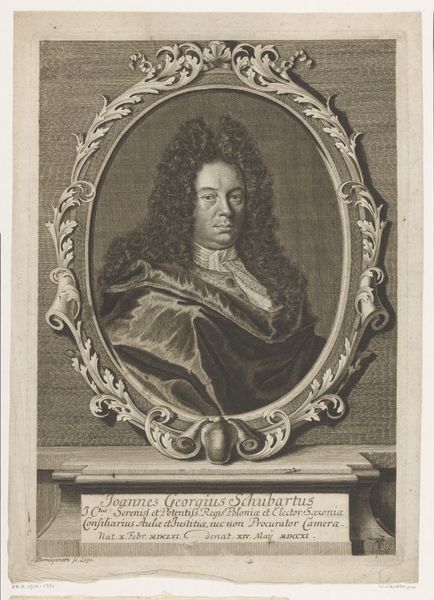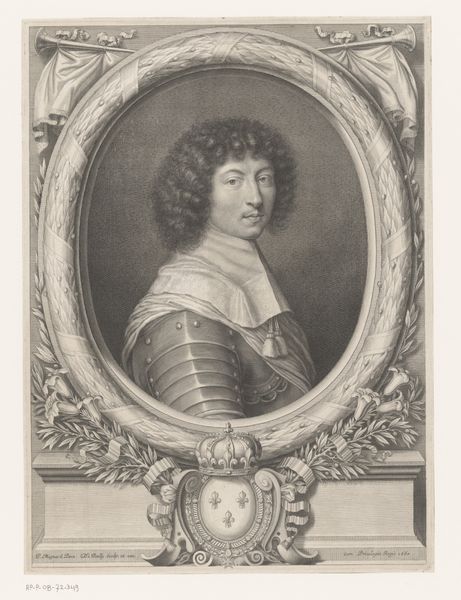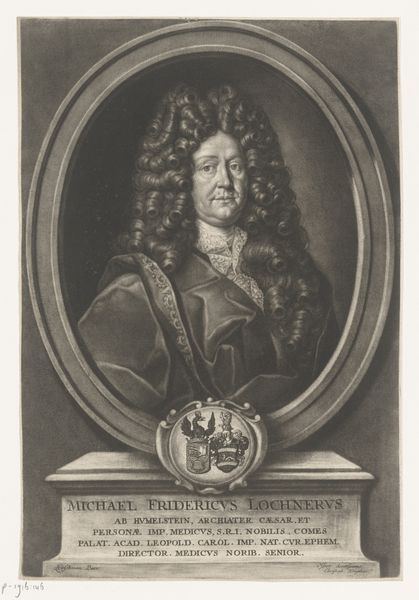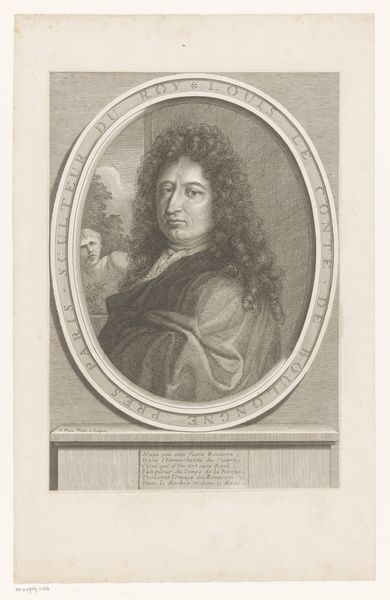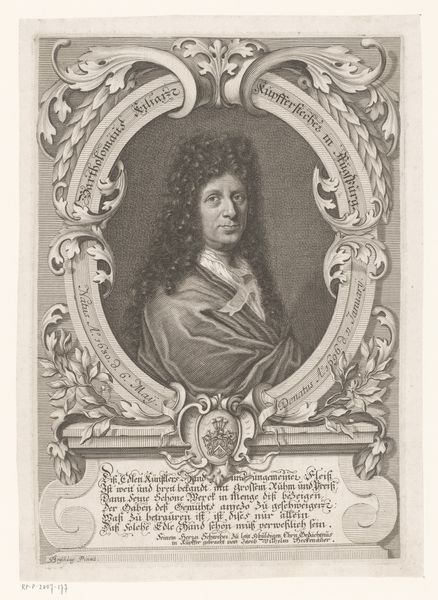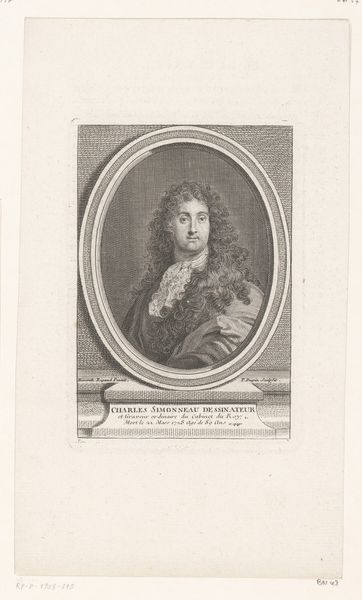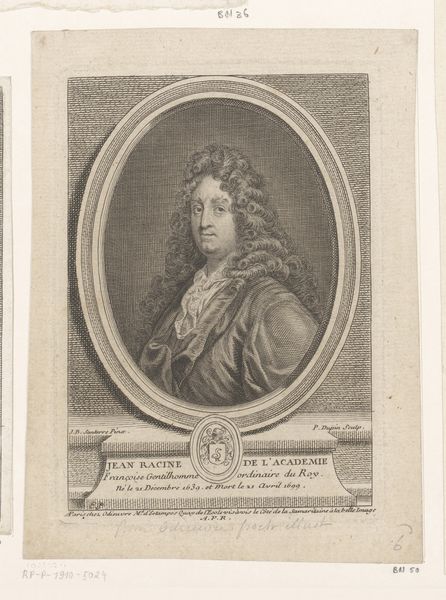
engraving
#
portrait
#
baroque
#
line
#
engraving
Dimensions: height 377 mm, width 260 mm
Copyright: Rijks Museum: Open Domain
Editor: This is a portrait of Joseph Parrocel, created in 1744 by Johann Georg Wille. It's an engraving and gives off a very formal, almost stately vibe. What do you see in this piece? Curator: Beyond the formal Baroque style, I see a meticulously crafted statement about social hierarchy and the power dynamics of the time. The artist, Wille, wasn't just creating a likeness; he was constructing an image of Parrocel that reinforced his status as a prominent painter. Look at the oval frame and the heraldic shield—how do those choices contribute to the message being conveyed? Editor: They definitely add to that feeling of importance, of historical weight. So, is this portrait about more than just Parrocel the individual? Curator: Precisely. Consider the role of portraiture within 18th-century society. It served as a tool for social climbing and solidifying one's place within a rigid class system. Wille’s technical skill, the precise lines of the engraving, further elevates the subject. We must consider how access to art like this reinforced existing social inequalities. Editor: So the portrait itself is participating in those inequalities, almost celebrating them? Curator: In a way, yes. It presents an idealized, carefully constructed vision of Parrocel that obscures any complexities or vulnerabilities. And it sends a message about who is deemed worthy of such representation. Do you think an artwork today can fulfill a similar role in celebrating or challenging inequalities? Editor: That's a powerful point. Thinking about contemporary portraiture, there's definitely still that potential to either reinforce or subvert those established hierarchies. It’s all about who gets to control the narrative. I didn't initially think about it, but I understand the relevance and meaning behind such artworks. Curator: Indeed. By engaging with art history through a critical lens, we can see how art has been, and continues to be, intertwined with broader socio-political narratives.
Comments
No comments
Be the first to comment and join the conversation on the ultimate creative platform.
